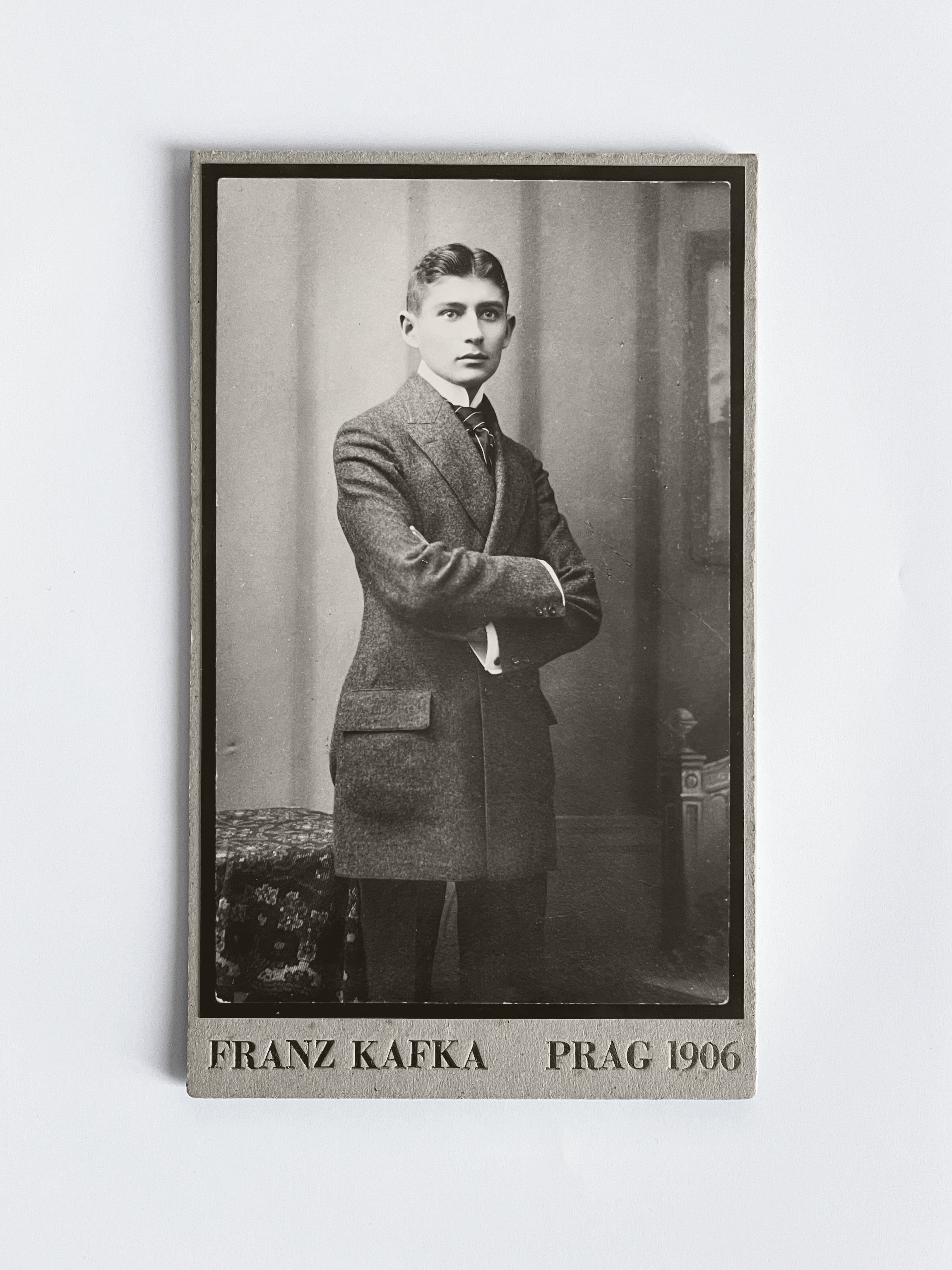The writer's image has always aroused great interest: from Walter Benjamin, who developed an obsession with a photograph of Kafka as a child, Josipovici went so far as to say that Kafka's face is "at once angelic and animal" "completely gathered in the eyes", concluding that "his photographs disturb us in the same way as his writings".
A portrait of Kafka in 1906

The writer commissioned this portrait when he received his doctorate in law in 1906. An instrument of the 19th-century bourgeoisie par excellence, the highly codified studio portrait symbolizes the success of the young Kafka, ready to embark on his career as a lawyer. However, this shot marks the beginning of the writer's terrible experience in the absurd meanders of Prague's administration - a series of internships in the justice system that gave rise to his masterpieces
The Trial and
The Penitentiary Colony. Aware that the studio portrait was decisive in the construction of social, cultural and personal identity, Kafka submitted to this conventional exercise - but his gaze inevitably betrays his genius and foresight regarding this new medium, which was also beginning to become an instrument of control and categorization in criminology and anthropology.
Kafkaesque views on photography
Photography itself has a persistent yet unfathomable significance in the writer's work - the studio portrait is omnipresent. This is particularly true of
Metamorphosis, in which Gregor Samsa's monstrous transformation is accompanied, condensed and even triggered by photographic images, notably the one evoking Sacher-Masoch's famous Venus in the Fur (
Venus im Pelz).
Fascinated by this medium, Kafka was always ambivalent about the capabilities of this terrible mechanism disrupting our perception of reality:
"Photography chains the gaze to the surface of things and generally camouflages their hidden nature, which only filters like a moving chiaroscuro through their physiognomy.
The most precise lenses cannot capture this. Or do you believe that the unfathomable reality that, in past eras, legions of poets, scientists and magicians have confronted in the anguish of their hopes and desires... that this reality, which is always eluding us, can now be reached simply by pressing a button on a four-cent mechanism?.. I doubt it. This automatic device does not represent an improvement on the human eye, it only represents a dizzying simplification of the fly's eye." (Gustav Janouch, Conversations with Kafka)
Kafka in the eye of the lens
Kafka's own reflection in the camera lens was a lifelong source of discomfort and dysmorphia - and, paradoxically, also an instrument of seduction. Kafka's letters are filled with mentions of his insatiable desire for photographs of his female correspondents – images acting as erotic objects and symbols of an intimate bond that he exchanges for his own portraits. Sharing his photographs with Felice Bauer, he would always feel obliged to comment on his appearance, imperfectly revealed by the camera: "In reality, I don't have a twisted face, it's only the flash that gives me this visionary look". We indeed find in his portraits that famous look piercing the haunted face of the young Kafka, destined for a destiny both tragic and glorious.
>> Click here to browse all our Kafka items









![[Meidosems] Sans titre. Encre et aquarelle](media/crop1-h-177-w-165-michaux_henri_sans-titre-encre-et-aquarelle_1946_edition-originale_5_64945.jpg)



